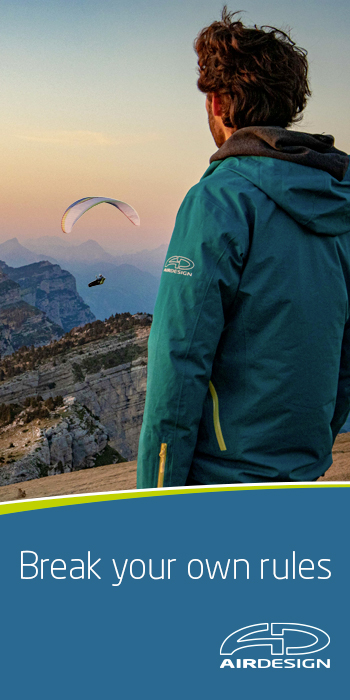TIPS ON HOW TO BECOME A GOOD PILOT!
Emma Casanova reports
The Paragliding Master Tips are a series of articles designed to improve existing skills and techniques as well as help learn new ones. Intended for the beginner to intermediate pilot, these tips and tricks are offered as guidelines from some of paragliding’s most knowledgeable pilots.

SOMMAIRE
1 – Mind games and the art of sports psychology
Even after many years of flying pilots can find their level of flying has remained relatively unchanged, whilst others feel they continue to progress. All but a few actually stop to consider why this is.
One of the major ways to improve is by changing the way we, as pilots, view our own achievements and mistakes. Success only confirms that you have achieved what you have set out to do, and whilst this was the objective the learning opportunities will have been limited. However, performing a skill and making mistakes provides an opportunity to learn through analysis so that progression can be achieved without repeating the same mistakes over and over again.
Let’s take a closer look at sport psychology and analysis. This starts on launch from the moment you inflate your glider. Flying instructor John Welch, gives us a perfect example below of how applying a little sports psychology to the process can improve pilot skills and enable continued progression.
Example: Pilot A is on take off at his local site and the conditions look good. He checks his canopy, equipment, wind and airspace in front of launch. He inflates his glider but his attempt is unsuccessful. He tries further attempts, all of which also fail. He spots a friend nearby and asks him to help him launch, murmuring that the conditions are tricky and finding reasons to justify his botched attempts. Pilot A eventually launches with assistance, but what he should have done was stop, take time out and think about the reasons why he was unable to launch on his own, correct these mistakes before trying again. This may have taken several attempts but by doing so, Pilot A would have been able to turn the whole process into a learning experience rather than avoiding the real problems.

Analysis involves both internal and external factors, all of which play an important part in identifying a problem that needs to be looked at from every angle in order to find the solution. In the above scenario, perhaps the pilot was anxious, tired, or suffering from fear or a lack of self-confidence on launch.
Any of these “internal” factors can be more difficult to identify than “external” ones, but to give an example, if Pilot A was on a small, busy take-off with lots of people watching him, he may feel put-off by spectators or under pressure to get off the hill if there are lots of other pilots also waiting to launch. Situations like these can be intimidating and off-putting, and can cause a pilot to make a mistake or a series of blunders.
There are solutions to these “internal” problems of anxiety, for example visualisation, which has been, and is still used by many successful competition pilots today. Mads Syndergaard writes about visualisation and positive thinking in his book “Flying Rags for Glory”, where he talks about taking time to recall similar situations but which have resulted in a successful outcome; in this instance, a successful launch.
So returning to our scenario on the hill, sometimes an unsuccessful launch is a result of multiple factors, some of which are “internal”, but some which can also be described as “external”.
An external problem could be, for example, that the glider Pilot A is flying is inappropriate for his level of ability, or that his ground handling skills are just not up to scratch. The local weather conditions can also have an impact. Finding solutions to external factors is often much easier, and analysing the situation can produce a clear definition of what needs to be changed, one way or the other, to find the solution. This could be that Pilot A should have chosen a glider with suitable handling characteristics to his ability. Another solution could be simply to go away and practice his ground handling skills.
A helpful way for a pilot to identify whether problems or even successes are internal or external is to write them down, describing the scenario and either what you would have done differently to rectify the problem, or writing what it was that made the event a success. In this way you can analyse both your strengths and weaknesses constructively. If you keep a log-book, make it interesting to read by adding some visual elements to illustrate different scenarios, solutions or successes.
In his book, Mads dedicates a whole chapter to goal setting, “priming” as he calls it, which will add purpose and direction to your flying, helping you monitor your progress and make a comparative analysis of your personal success. As long as the goals are realistically achievable without causing stress or anxiety, they can only enhance the learning process. Personal goals can be short, mid or long term and they will inevitably change as progress is made, but in order to set a goal in the first instance, you must be able to clearly define the specifics of what it is that you want to achieve.

Charles Cazaux deep in thought
Goals will help you move away from measuring your pilot progression through “quantity”, for example, counting the total number of hours you have flown. We know that this often does not bear resemblance to pilot skill, with some pilots who have flown many hours still under achieving the basics. So we need to concentrate on the “quality” of our progress by making proper assessments, setting realistic and achievable goals, and monitoring progress through analysis of one’s own performance.
These concepts are good starting points to gauge any pilot’s progress. Forward thinking, mental preparation, planning and practice are all proactive ways to become a better pilot.

Links:
Book by Mads Syndergaard “Flying Rags for Glory” purchase from Rock the Outdoor shop
Collaboration: Tim King, Flight Culture School @ www.flightculture.co.uk


